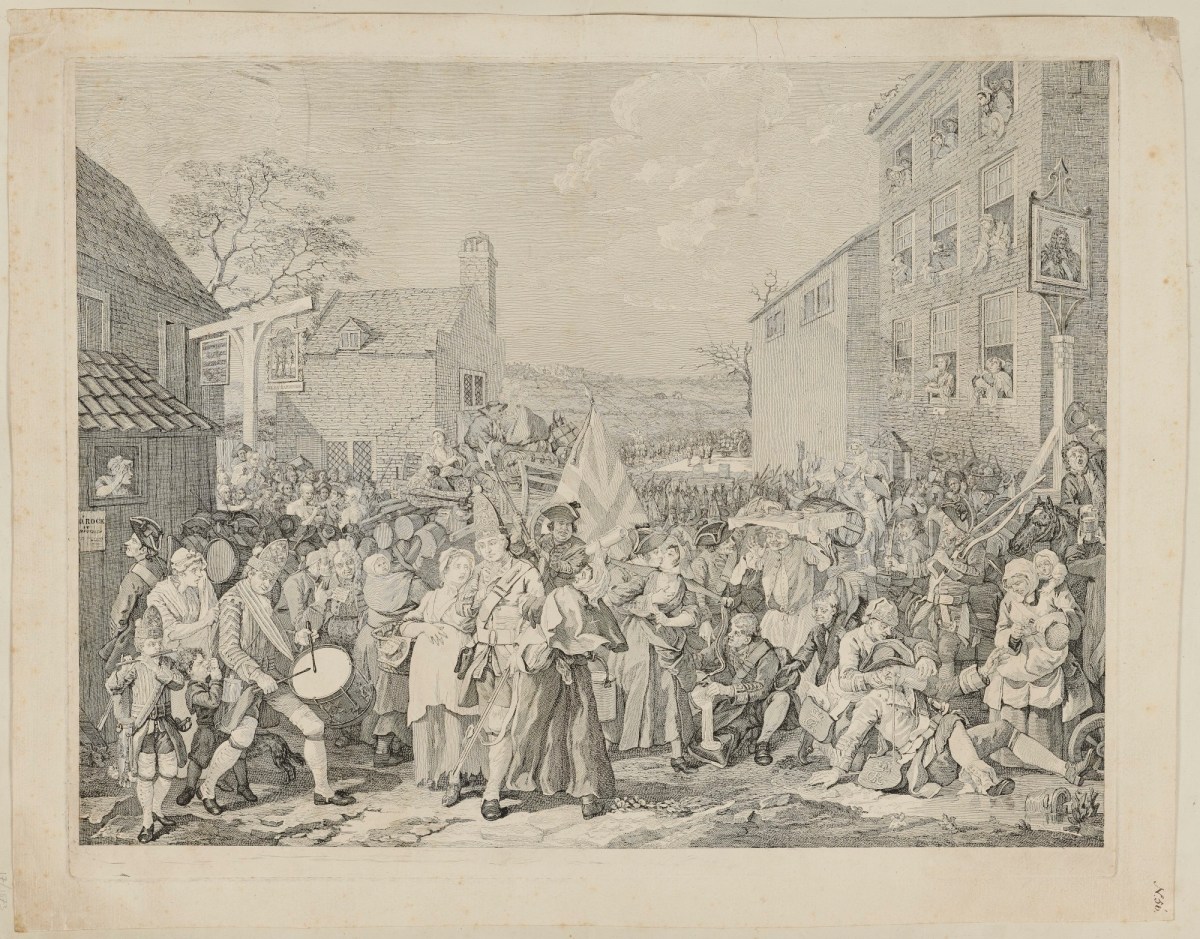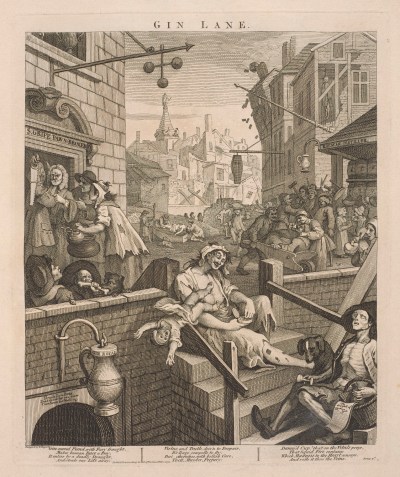
William Hogarth, The March to Finchley, 1750.
412 mm x 545 mm. © Photo: Royal Academy of Arts, London. Photographer: Prudence Cuming Associates Limited.
This image is not available to download. To licence this image for commercial purposes, contact our Picture Library at picturelibrary@royalacademy.org.uk
The March to Finchley, 1750
William Hogarth (1697 - 1764)
RA Collection: Art
Etching after William Hogarth's painting The March of the Guards to Finchley (1749-50, The Foundling Museum, London), which alludes to march of troops to Finchley Common, north of London, in readiness to defend the capital, and proceed to Scotland, during the second Jacobite rebellion. The scene is the Tottenham Court Turnpike and shows a bustling and varied assembly typical of Hogarth, with soldiers mingling with their families, tradesen, drinkers and beggars. In the distance (the scene faces northwards) a disciplined line of soldiers can be seen proceeding towards Finchley.
Einberg suggests Hogarth's intention was to show that the seemingly disorganised force in the foreground was transformed into a model army once about its task, and one which accordingly secured a resounding victory over the Jacobites within a few months. The Jacobite rebeliion was frequently addressed in Hogarth's prints, for example in The Gate of Calais (17/3546) which shows exiled Scottish and Irish Jacobites in France, or his portrait of Simon, Lord Lovat on his way to trial (17/3542).
The print was engraved by Luke Sullivan and first published in 1750, with further impressions print in 1761 after Hogarth retouched the plate (the artist did this with many of his earlier plates during his final years). This impression is a rare example of the unfinished first state, before the image was finished and the lettering added below.
Object details
412 mm x 545 mm
Hogarth's prints. Vol. I. - [s.l.]: [n.d.]
Associated works of art
1 results
Start exploring the RA Collection
- Explore art works, paint-smeared palettes, scribbled letters and more...
- Artists and architects have run the RA for 250 years.
Our Collection is a record of them.




